When the British Raj ended on the Indian subcontinent, Bangladeshi architect Muzharul Islam said, “Independence brings in the greatest opportunity for a nation to express its thoughts, talent and energy…. Now, we the architects can construct the right and distinct kind of architecture for an independent people” (The Project of Independence Architectures of Decolonization in South Asia, 1947–1985, 2022). Islam’s “right and distinct kind of architecture” eventually manifested itself in Indian brutalist architecture. Brutalism embodied many of Independent India’s political ideals within one form: it left behind British conventions of modern architecture and created internationally modern structures that were still distinctly rooted in local design. On the 75th anniversary of Indian independence, let us look back from 1947 onwards to see a timeline of brutalism in post-independent India.
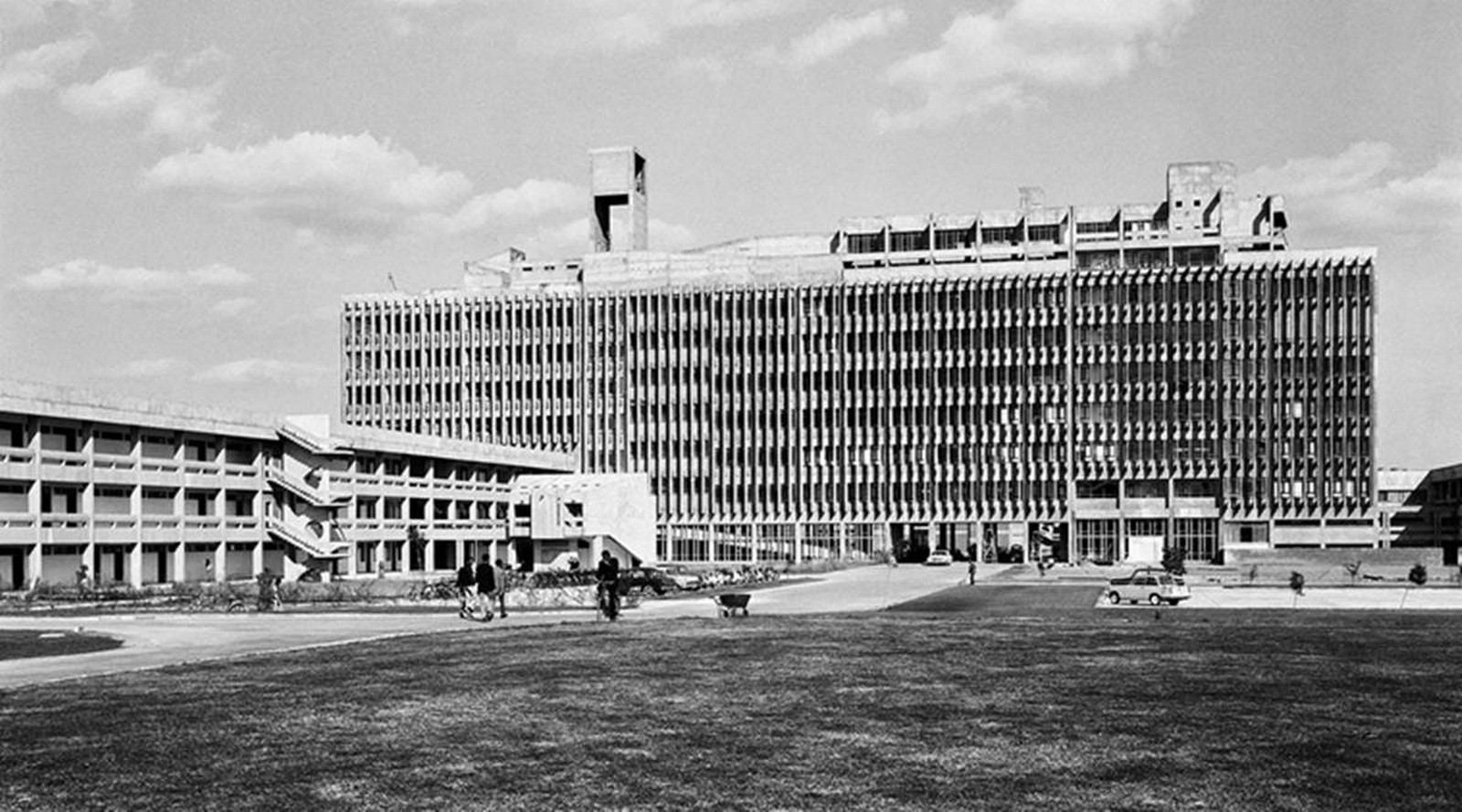
What is Brutalism?
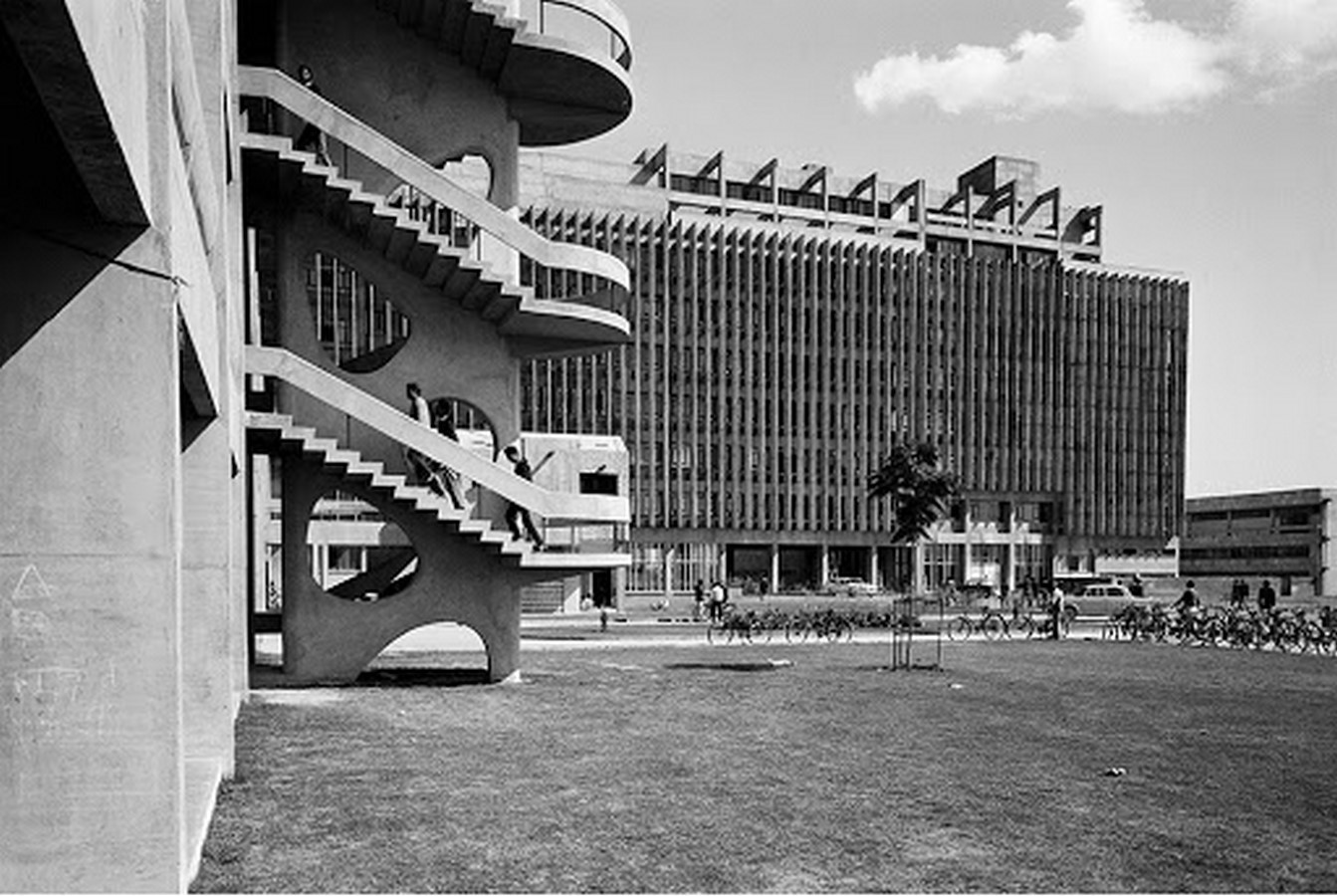
As a previous RTF article states, “Brutalism is a form of modernism where generally decorative elements, added over the walls to hide the building materials, are omitted…the frame of the building, its mechanical system, and the building’s concrete structure were exposed as the finished façade. All these components were designed to be seen and celebrated, to express the brutal honesty of the structure” (Rahate, n.d.). Interestingly, while brutalism is about prioritising function over form, it becomes clear through the timeline of brutalism in India that the concrete facades of brutalist buildings are often works of art in and of themselves in the way they use concrete’s strength to create unique and striking geometry in a structure.
Le Corbusier brings Brutalism to India
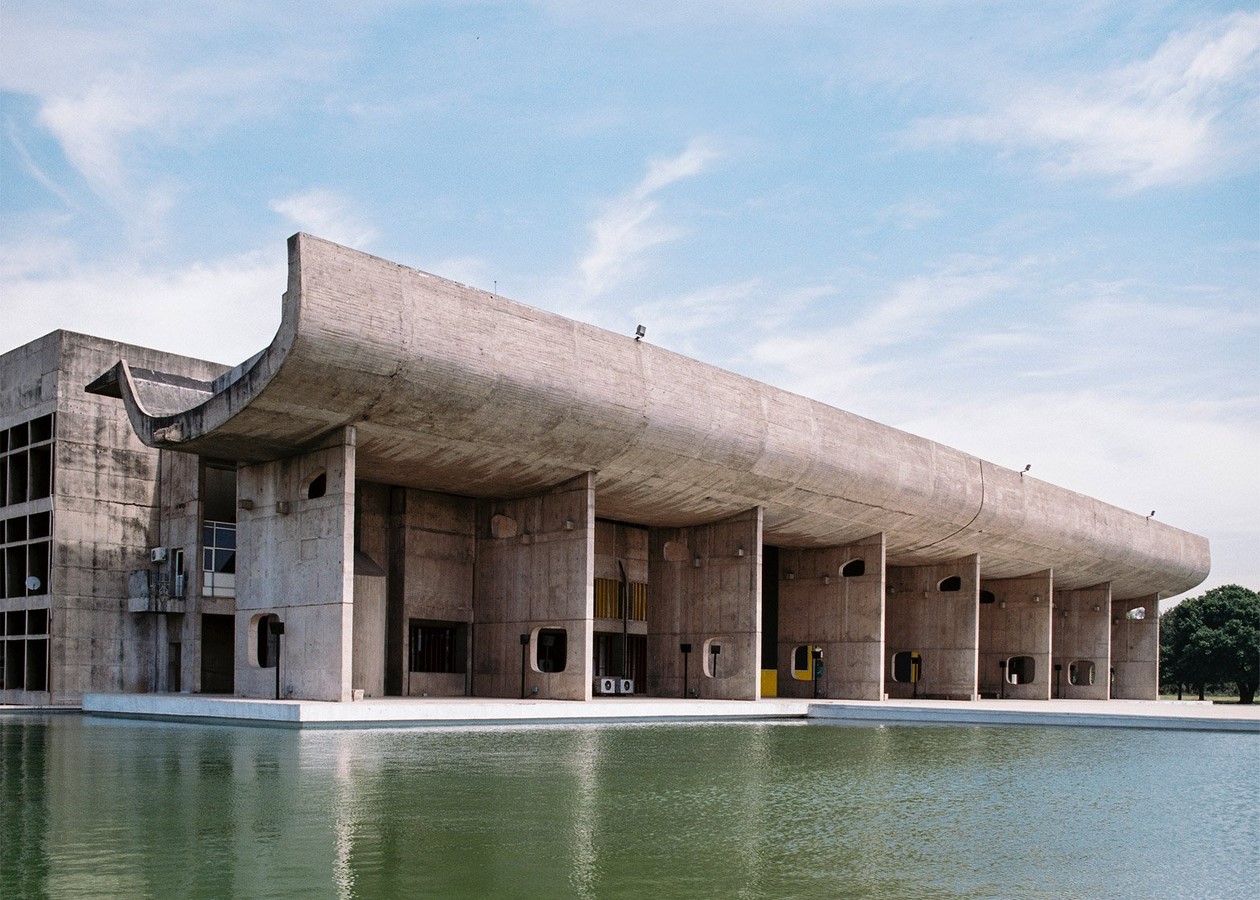
The first major brutalist structures in India were brought to the subcontinent by famed Swiss-French modernist Le Corbusier and his work on the capitol district of Chandigarh city in the 1950s. After Pakistan got Lahore during the partition, Punjab’s desperate need for a brand-new administrative capital drew the attention of Corbusier, who wanted to put his ideas on large-scale urban planning into action. While the entire design of Chandigarh is commendable, the architecture in the city’s capitol complex is what is truly emblematic of brutalism’s beginnings in India. The stark and rugged facades of the high court, secretariat building, and legislative assembly remain dumbfounding in their monumentality; a quality that large-scale brutalism can have with its imposing style.
A wave of Indian Brutalism
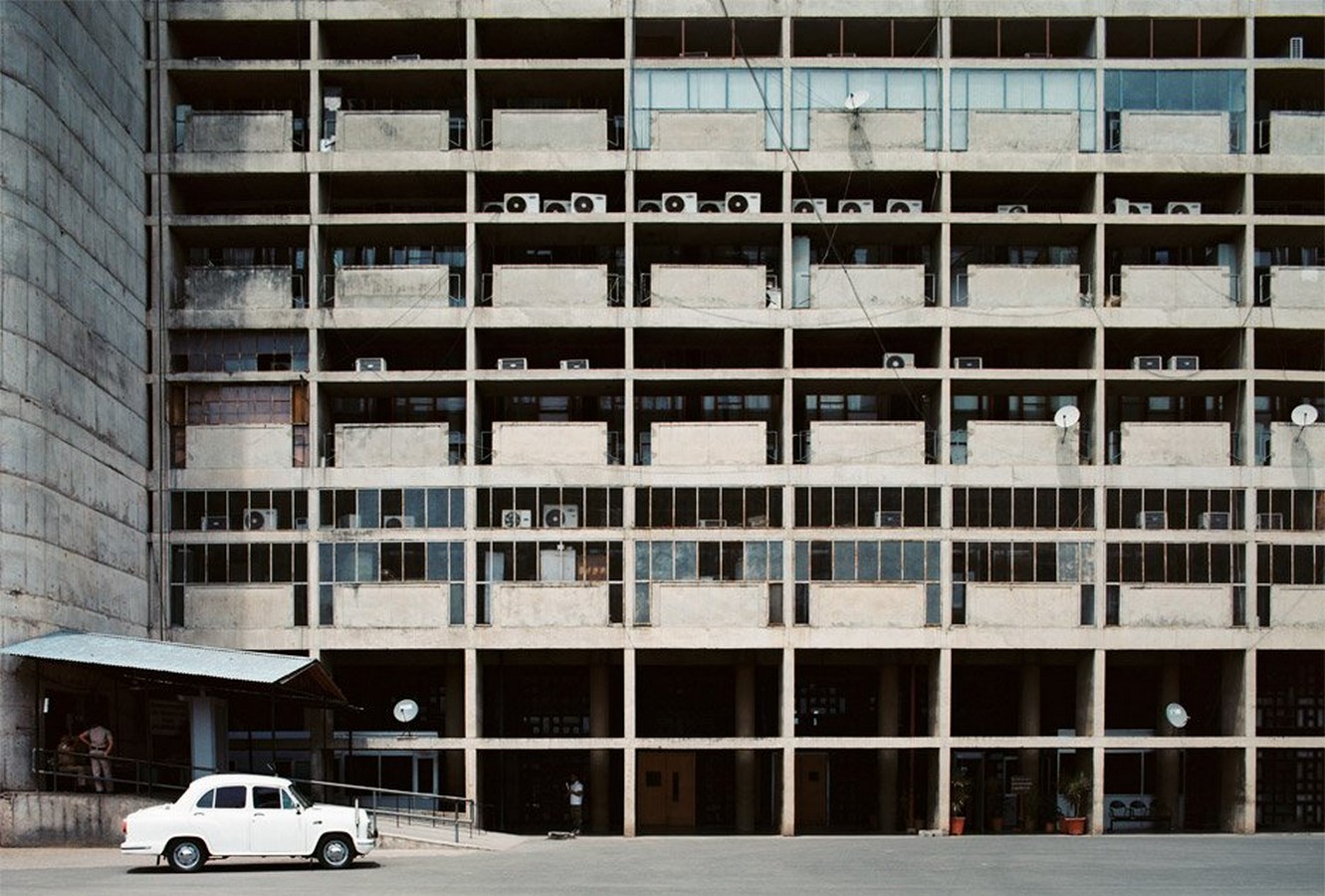
The Indian government had stipulated that Corbusier work with local Indian architects during the implementation of his project for Chandigarh so that local Indian architects could learn from him. This was important because British colonisation had suppressed local Indian architectural and design traditions from evolving. Le Corbusier’s sleek and experimental brutalist designs felt like the perfect outlet for centuries-worth of creative energy. From the late 1950s to the early 1980s, Indian architects’ most notable contributions became brutalist structures on the subcontinent (Ashton, 2016).

From 1959 to 1966, Achyut Kanvinde designed the Indian Institute of Technology (IIT) in Kanpur, a seminal example of university design that incorporated independent India’s desire for technological and scientific development while simultaneously incorporating the hallmarks of Indian brutalism like exposed brick and concrete walls. The structure was also tailor-made for the harsh environment of Kanpur, using open walkways and staircases to vent heat during the different times of the year (Indian Institute of Technology, Kanpur, n.d.).
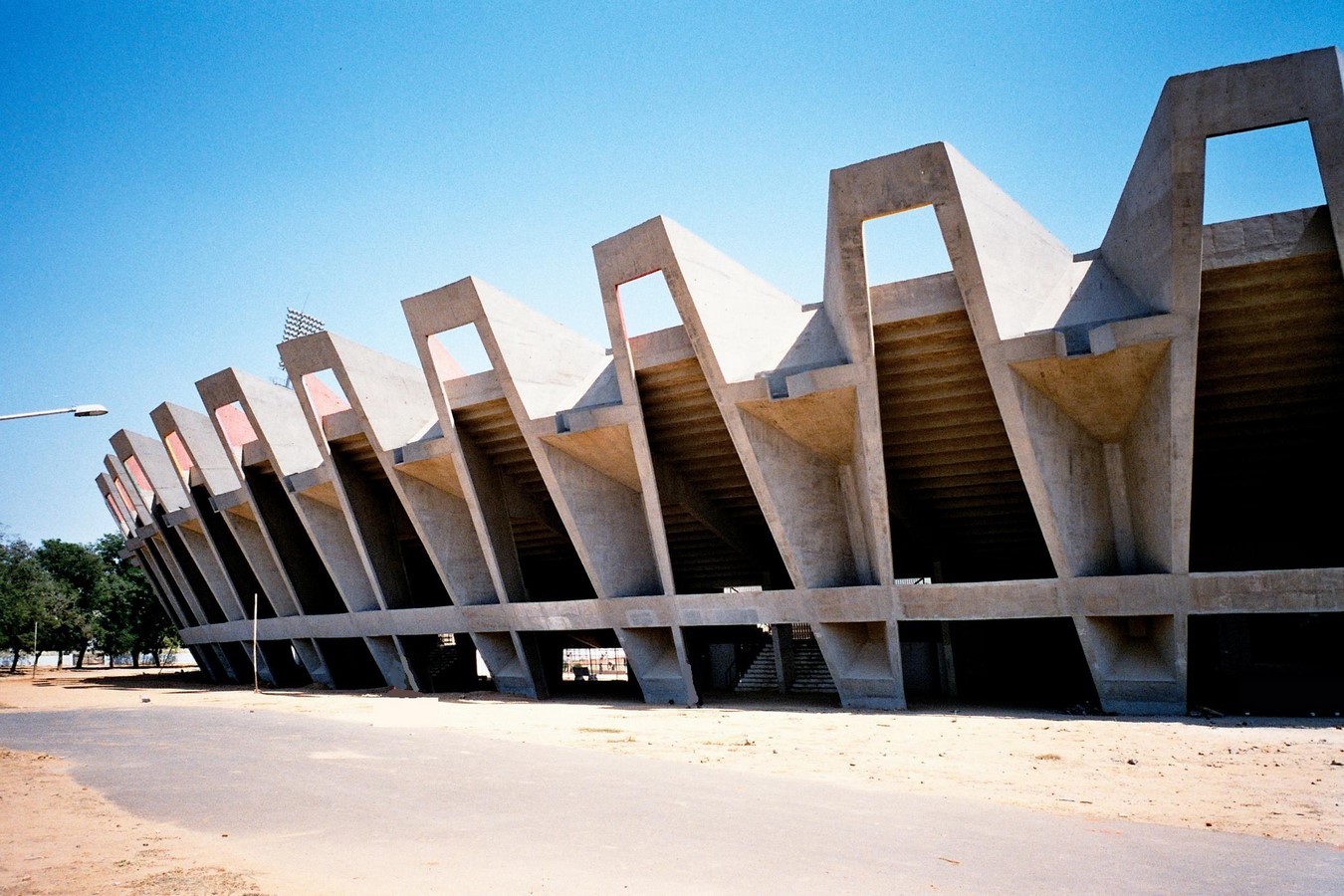
During the same period, Charles Correa designed the Sardar Vallabhai Patel Municipal Stadium. The stadium was part of a series of new developments in Ahmedabad, including more work by Corbusier, and Louis Kahn’s iconic IIM Ahmedabad campus. The stadium’s design incorporates the hallmarks of 1950s and 1960s modernist design, using a “folded plate design”. This design both increased the strength of the structure and decreased the cost of its construction – two major constraining factors in the way modernist designs had to be constructed in newly independent India (Izhar, n.d.).

From 1970 to 1972, Raj Rewal designed and created the Hall of Nations in New Delhi. The space frame of the structure was lightweight, easy to ventilate, and left an unobstructed internal volume for exhibitions. The hall’s design referenced traditional Indian design forms like perforated stone screen jaalis that also allowed light and ventilation while minimising heat gain. Once again, economic constraints for construction costs contributed to the memorable design of the structure, which effortlessly blended traditional Indian forms with modernist styles. Unfortunately, the hall was demolished in 2017 – a massive shock for the global architectural community (Stierli, 2017).

This wave of brutalist creativity continued into the late 1970s with Kuldip Singh’s National Cooperative Development Corporation (1978 to 1980). The building remains an impressive example of office construction, with its two open-plan office towers that step upwards and inwards, merging at the top. The stepped towers create a large open-air atrium between them that is punctuated by a spiral staircase (Dodson, n.d.).
Indian Brutalism today: An unappreciated style of architecture

Unfortunately, Kuldip Singh’s designs for the NCDC and subsequent structures in New Delhi were among the last prominent brutalist designs in the post-independent country’s legacy of the style. Since the early to mid-1980s, the style has fallen out of favour across the country. Instead, designs that follow updated conventions of modernism – including curtain-glass facades and more material-rich finishes – are largely favoured. Today, brutalism is interpreted by many as boring and authoritarian architecture that looks dated. As such, the country has not paid attention to its rich brutalist heritage, leaving many buildings in disrepair, or leading to their destruction – as with Raj Rewal’s Hall of Nations. Going forward, it becomes necessary for India to appreciate how crucial brutalism was in cementing India’s image as a newly independent nation poised for success on the global stage. Indeed, as we complete the celebration of independence once again, it is important to remember that the celebration of the country’s independence and the preservation of its brutalist architecture are the same.
References:
- Architectuul. n.d. Indian Institute of Technology, Kanpur. [online] Available at: <https://architectuul.com/architecture/indian-institute-of-technology-kanpur> [Accessed 18 August 2022].
- Ashton, I., 2016. Le Corbusier’s Chandigarh government buildings captured in new images by Benjamin Hosking. [online] Dezeen. Available at: <https://www.dezeen.com/2016/08/07/le-corbusier-capitol-complex-unesco-world-heritage-listing-chandigarh-india-benjamin-hosking/> [Accessed 18 August 2022].
- Dodson, M., n.d. PLATFORM: The Architectural Legacy of Kuldip Singh (1934-2020). [online] PLATFORM. Available at: <https://www.platformspace.net/home/the-architectural-legacy-of-kuldip-singh-1934-2020> [Accessed 19 August 2022].
- Izhar, G., n.d. Sardar Vallabhbhai Patel Stadium (Navrangpura) by Charles Correa: A World Monument – RTF | Rethinking The Future. [online] RTF | Rethinking The Future. Available at: <https://www.re-thinkingthefuture.com/case-studies/a4833-sardar-vallabhbhai-patel-stadium-navrangpura-by-charles-correa-a-world-monument/> [Accessed 19 August 2022].
- MoMA. 2022. The Project of Independence Architectures of Decolonization in South Asia, 1947–1985. [online] Available at: <https://www.moma.org/calendar/exhibitions/5439> [Accessed 19 August 2022].
- Rahate, O., n.d. 10 Iconic structures in Delhi: First face of Brutalist Architecture in India – RTF | Rethinking The Future. [online] RTF | Rethinking The Future. Available at: <https://www.re-thinkingthefuture.com/rtf-design-inspiration/a1877-10-iconic-structures-in-delhi-first-face-of-brutalist-architecture-in-india/> [Accessed 19 August 2022].
- Stierli, M., 2017. Remembering the Hall of Nations, New Delhi – post. [online] post. Available at: <https://post.moma.org/remembering-the-hall-of-nations-new-delhi/> [Accessed 19 August 2022].




















